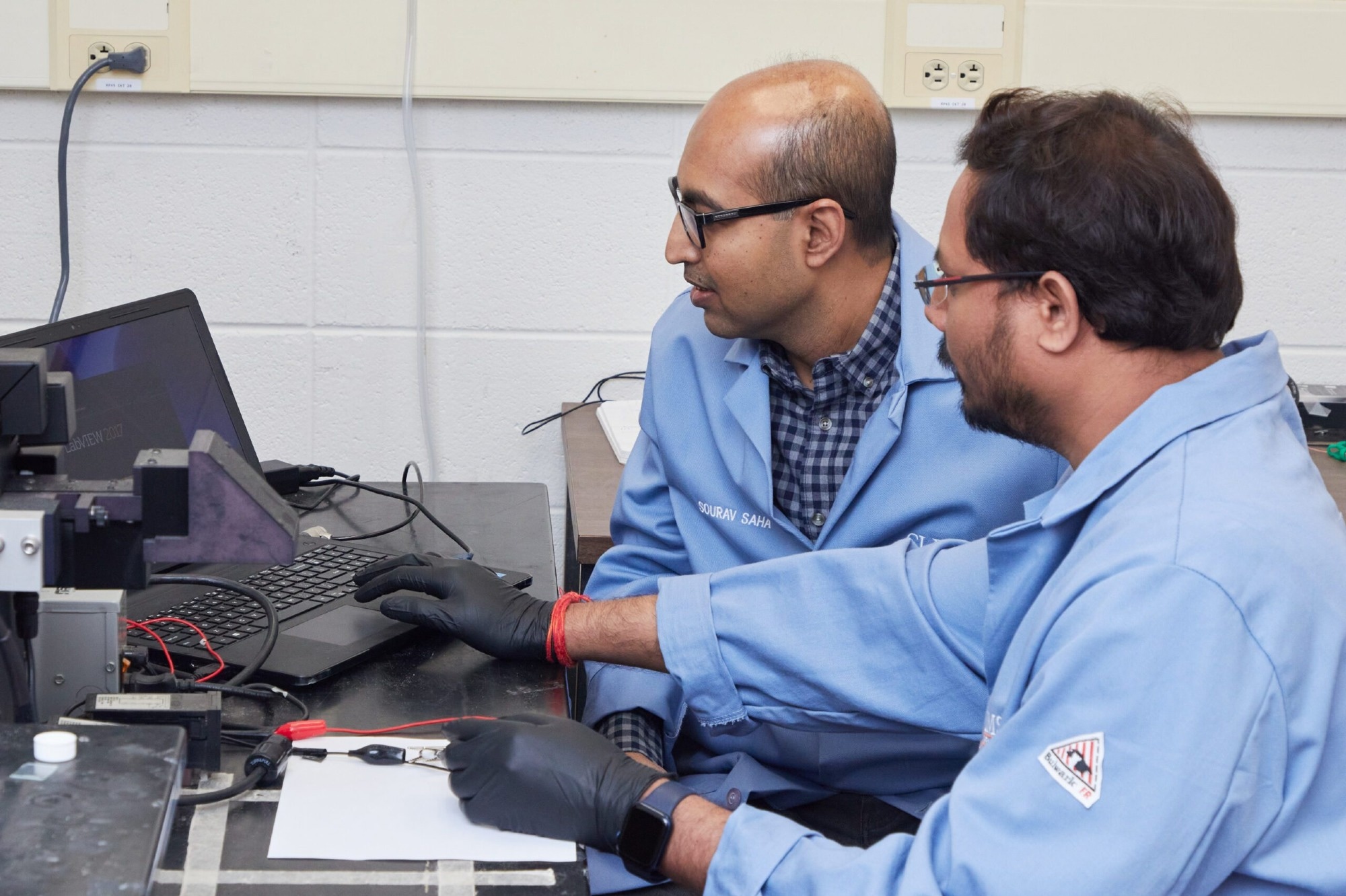An innovative two-dimensional electrically conductive metal-organic framework (MOF) has been created by a group of chemists at Clemson University. This development could boost current electronics and energy technologies.

Image Credit: Clemson University
MOFs are nanoscale structures that resemble miniature buildings and are constructed from metal ions connected by organic ligands. The structures have a remarkable amount of internal surface area and are usually hollow and porous. As a result, MOFs can accelerate chemical reactions, store guest molecules, and deliver drugs in a precise manner.
Certain MOFs can even conduct electricity, indicating that they could be used in next-generation semiconductors.
We need new materials for semiconductors for electronics and energy technologies, and this class of materials has shown great potential. These materials (MOFs) are much easier to synthesize, process and tune their electronic and optical properties than traditional inorganic semiconductors.
Sourav Saha, Study Lead and Associate Professor, Department of Chemistry, Clemson University
Biggest Obstacle
The greatest barrier to achieving high framework conductivity is their porosity.
Saha added, “That is really challenging to make porous materials electrically conducting because the charges don’t flow through the pores or the empty space. That is the holy grail. That is the main challenge of the field.”
To make these materials conduct electricity, chemists use a variety of techniques. Charges can travel via chemical bonds or through the small gaps between organic ligands.
Saha further added, “Typically, most of these MOFs that are electrically conducting have either through-bond or through-space conduction pathways. What we accomplished here was to combine these two pathways into a single 2D material.”
More Conductivity
The progenitor MOF, which lacked such effective out-of-plane conduction routes, had conductivity that was 10 to 15 times lower than that of the new MOF.
Dr Saha’s work is helping to deliver on the promise that metal-organic framework materials offer for improving a wide range of technologies, including batteries, solar cells, and chemical and pharmaceutical production. His clever introduction of electric conductivity in these open framework materials is a tour-de-force of molecular design. It is exciting to see these advances emerge from Clemson’s research enterprise.
Stephen Creager, Associate Dean and Professor, Chemistry, College of Science, Clemson University
In an article titled “Electrically Conductive π-Intercalated Graphitic Metal-Organic Framework Containing Alternate -Donor/Acceptor Stacks,” the team’s findings were published in the prestigious international journal Angewandte Chemie. At Clemson, Saha’s research group includes graduate students Paola Benavides, Shiyu Zhang, and postdoc Ashok Yadav.
Saha’s experimental study was supported and validated by Wei Zhou of the National Institute of Standards and Technology’s Center for Neuron Research.
The National Science Foundation provided funding for this study.
Journal Reference:
Yadav, A., et al. (2023) Electrically Conductive π-Intercalated Graphitic Metal-Organic Framework Containing Alternate π-Donor/Acceptor Stacks. Angewandte Chemie. doi:10.1002/anie.202303819.